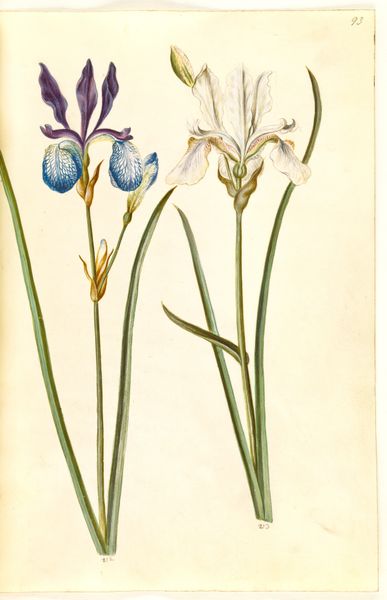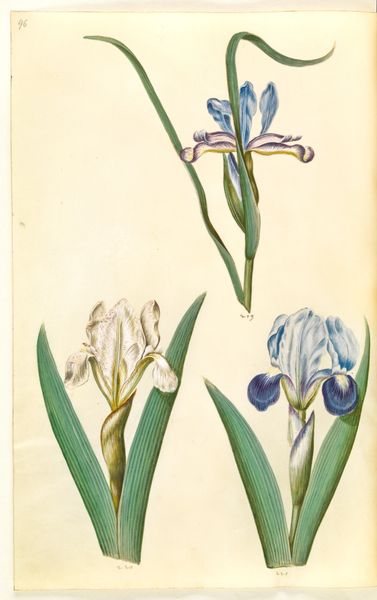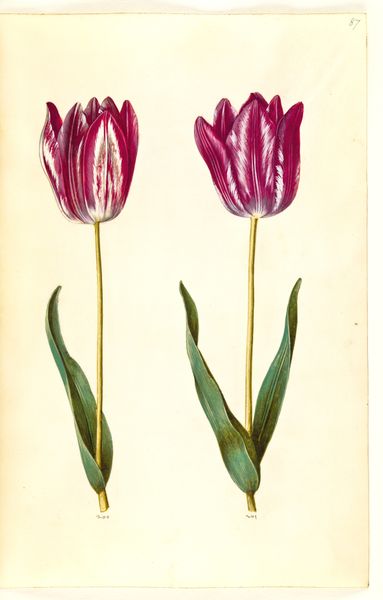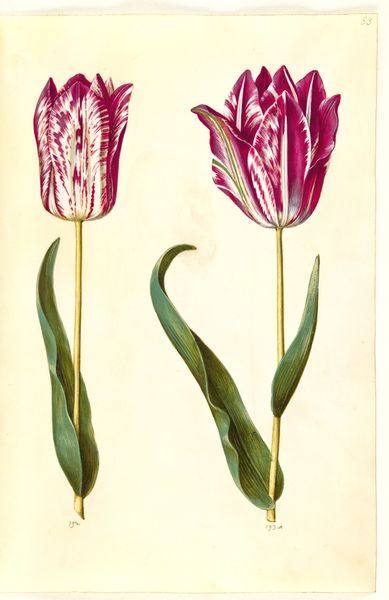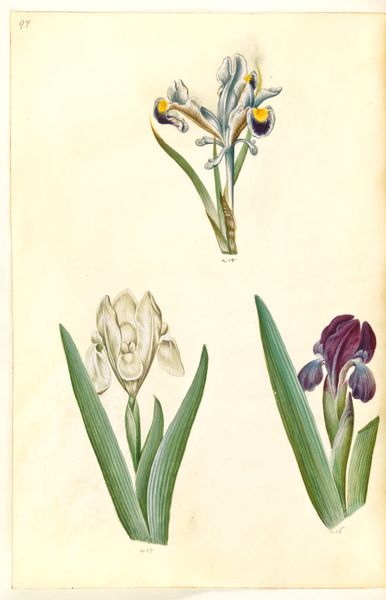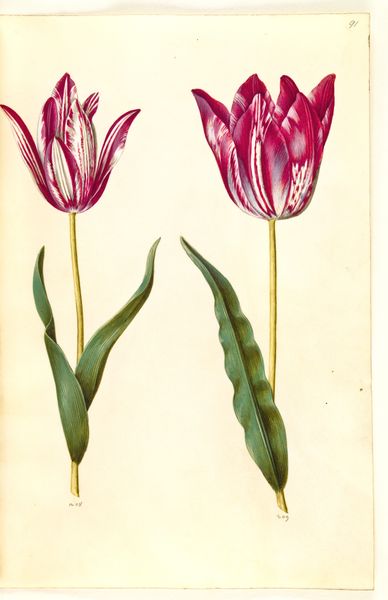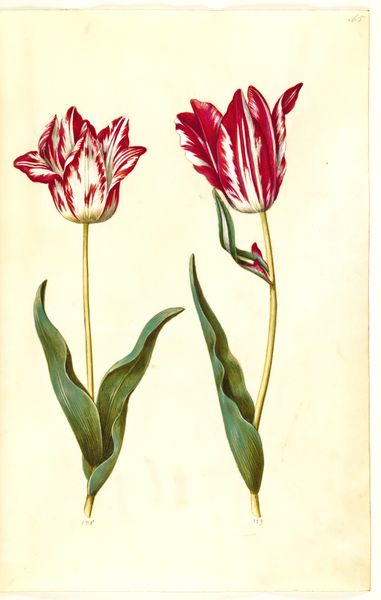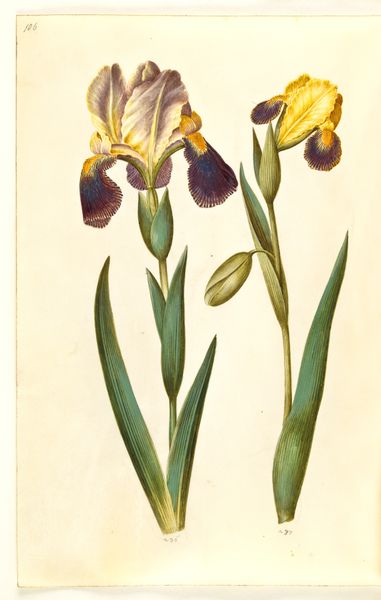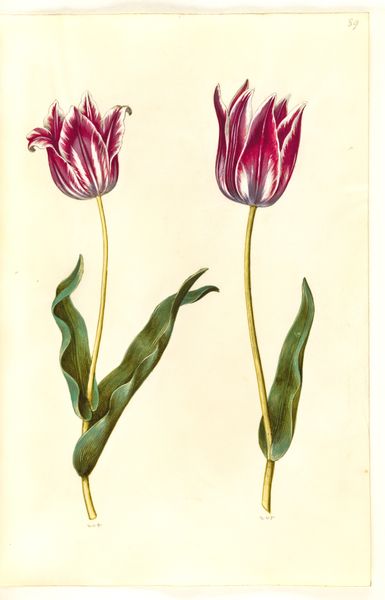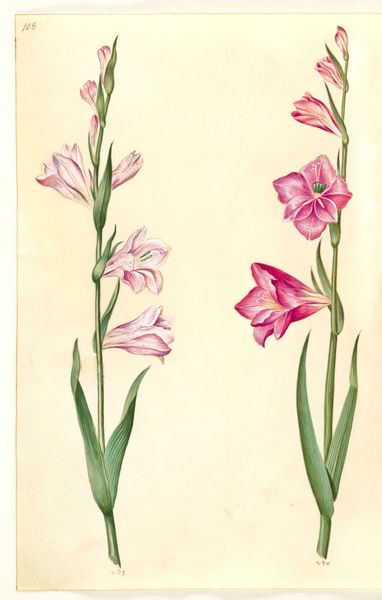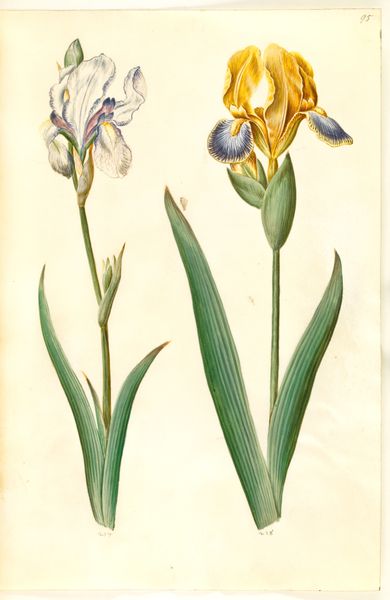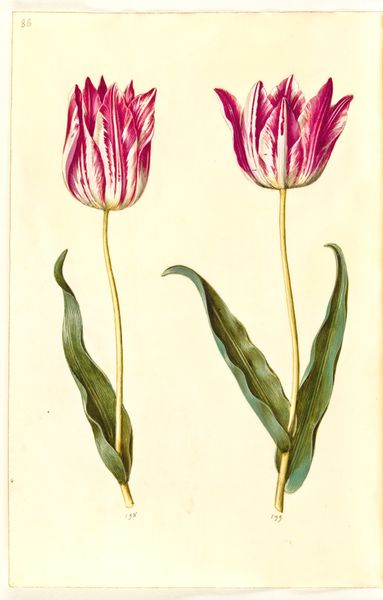
Sternbergia lutea (almindelig sternbergia); Colchicum autumnale (høst-tidløs); Colchicum variegatum (plettet tidløs) 1635 - 1664
0:00
0:00
drawing, gouache, watercolor
#
vegetal
#
drawing
#
baroque
#
gouache
#
watercolor
#
botanical drawing
#
botanical art
#
watercolor
Dimensions: 375 mm (height) x 265 mm (width) x 85 mm (depth) (monteringsmaal), 358 mm (height) x 250 mm (width) (bladmaal)
Curator: Look at the elegant precision of these flowers. This work, attributed to Hans Simon Holtzbecker, produced sometime between 1635 and 1664, features gouache and watercolor on paper. The artwork presents three distinct botanic specimens against an unadorned background. Editor: There's a quietness to this piece. A contemplative stillness that speaks to the patience of observation, but I feel like that tranquility hides so much about its historical era. Curator: Indeed. Observe the fastidious linework describing each petal, stem and leaf. Holtzbecker expertly uses the transparency of watercolor to build up the forms, revealing subtle modulations in color, shadow, and texture that articulate each flower. Editor: The way that natural history was being documented then isn't divorced from colonial expansion. These floral studies, while seemingly innocent, contributed to a scientific project complicit with power structures exporting resources and reshaping landscapes during that time. Who had access to this knowledge and who was it withheld from? Curator: You’ve introduced another element in its study. From a purely compositional view, the way Holtzbecker has positioned these different flowers on a single sheet shows an awareness of spatial relationships. The varying angles and overlaps invite your eye across the sheet and add depth. Consider that botanical illustration required skill and precise observation of the forms of flowers at various stages. Editor: Absolutely. And in this way it speaks volumes about its original audience as an artwork of bourgeois science and social display—where scientific discoveries became emblems of power. In light of intersectional theory, whose labour facilitated such privilege? How do issues like class and race intertwine with supposedly neutral scientific endeavours? Curator: These flowers speak to more than beauty; they embody intellectual curiosity and a new form of documentation. Notice Holtzbecker's restraint. Despite opportunities to amplify and adorn, he stays focused, as though science here is elevated through simplicity. Editor: And this same scientific "simplicity" serves particular political goals and narratives by emphasizing certain ways of seeing and being in relation to the natural world and discredits indigenous and vernacular ones, then as much as it still does now. Considering that colonial projects often began under the guise of "scientific exploration," looking at the context in this botanical drawing becomes profoundly urgent for modern viewers. Curator: That said, returning to form: The harmony and balance in this artwork invites long looking. Editor: True, but what feels inviting can conceal layers of complexity demanding deconstruction. These are not simply flowers frozen in pigment; they're nodes in a sprawling network of historical and social relationships.
Comments
No comments
Be the first to comment and join the conversation on the ultimate creative platform.
